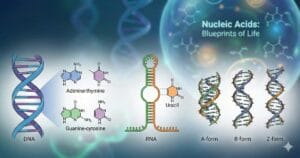
COMPETITIVE EXAM MCQs SERIES of ENVIRONMENTAL SCIENCE for UGC-NET/JRF, SLET, ARS, GATE, and other entrance tests – Contemporary Environmental Issues: Climate Change and Global Warming.
Syllabus Outline
- Greenhouse effect and greenhouse gases
- Sources and sectors contributing to greenhouse gas emissions
- Scientific basis and evidence of climate change (e.g. Intergovernmental Panel on Climate Change reports, global temperature trends, sea level rise, glacial retreat, extreme weather events)
- Impacts of climate change on ecosystems and biodiversity
- Climate change mitigation strategies and adaptation strategies
- International frameworks addressing climate change (e.g. United Nations Framework Convention on Climate Change, Kyoto Protocol, Paris Agreement)
This quiz contains concept-based, most frequently asked 25 MCQs of “Contemporary Environmental Issues: Climate Change and Global Warming”. Each question has a single correct/most appropriate answer.
*****
1. Which of the following statements correctly describes the greenhouse effect?
A) Shortwave infrared radiation is absorbed by greenhouse gases, preventing heat loss.
B) Longwave infrared radiation is absorbed by atmospheric gases, warming the lower atmosphere.
C) Greenhouse gases reflect sunlight to space, cooling the Earth.
D) Shortwave ultraviolet radiation is absorbed by greenhouse gases, preventing heat loss.
2. Which greenhouse gas has the highest global warming potential (GWP) over 100 years?
A) Methane
B) Carbon dioxide
C) Nitrous oxide
D) Sulfur hexafluoride
3. Water vapour is an important greenhouse gas. Its concentration in the atmosphere is primarily controlled by:
A) Biological processes such as cellular respiration and methanogenesis
B) Industrial emissions
C) Atmospheric temperature through the Clausius–Clapeyron relationship
D) Intensity of incoming solar radiation
4. Which feedback mechanism amplifies the greenhouse effect?
A) Reduced cloud cover decreases infrared trapping.
B) Increasing ice cover increases albedo.
C) Warmer temperatures increase water vapour.
D) The heating oceans absorb more carbon dioxide.
5. Assertion (A): Carbon dioxide is the most significant anthropogenic greenhouse gas by concentration and effect.
Reason (R): Carbon dioxide has a higher global warming potential than any other greenhouse gas.
A) Both A and R are true, and R is a correct explanation of A
B) Both A and R are true, but R is not a correct explanation of A
C) A is true, but R is false
D) A is false, but R is true
6. Assertion (A): Water vapour is the most abundant greenhouse gas in the atmosphere.
Reason (R): Warming leads to increased evaporation and higher atmospheric water vapour content, creating positive feedback.
A) Both A and R are true, and R is a correct explanation of A
B) Both A and R are true, but R is not a correct explanation of A
C) A is true, but R is false
D) A is false, but R is true
7. Which of the following is a primary source of anthropogenic nitrous oxide emissions?
A) Fertiliser application in agriculture
B) Livestock enteric fermentation
C) Industrial cement production
D) Fuel combustion in vehicles
8. By approximately how much has the global average surface temperature risen in the last 100 years?
A) 0.4°C
B) 1.0°C
C) 1.8°C
D) 2.5°C
9. Ice core records reveal that current atmospheric Carbon dioxide concentrations are higher than at least:
A) 100,000 years
B) 400,000 years
C) 800,000 years
D) 1,000,000 years
10. Arctic sea ice summer extent has been observed to ______ in recent decades, which is evidence of climate change.
A) increase significantly
B) remain constant
C) decrease significantly
D) oscillate without trend
11. Where does most of the excess heat trapped by greenhouse gases accumulate in the Earth system?
A) Atmosphere
B) Oceans
C) Land surfaces
D) Polar ice sheets
12. Volcanic eruptions can temporarily cool the global climate primarily because they emit:
A) High temperature transforms carbon dioxide into carbonates, which reduces the greenhouse effect
B) Particulate matter and sulfur aerosols that reflect sunlight to space
C) Both of A) and B)
D) None of the above
13. Coral bleaching events are mainly caused by which of the following factors?
A) Increased salinity in ocean water
B) Increased Sea surface temperature
C) Overfishing of coral reef species
D) Algal bloom due to pollutants entering the coastal region
14. Ocean acidification, a result of rising carbon dioxide, most directly harms which part of marine ecosystems?
A) Coral reefs and shell-forming organisms
B) Cellular respiration of marine organisms
C) Nervous systems of marine organisms
D) Change in the food habits of marine organisms impacting the food chain and food web of marine ecosystems
15. Many terrestrial species have migrated from lower altitudes to higher altitudes primarily because:
A) Due to rising average temperature, they need to find cooler climates suitable for their survival.
B) Due to increasing carbon dioxide and decreasing oxygen levels, they need to find higher oxygen levels to survive.
C) Soil nutrients are richer at higher elevations
D) There are fewer predators at higher altitudes.
16. Which of the following was the first legally binding international treaty to reduce greenhouse gas emissions?
A) Paris Agreement (2015)
B) Kyoto Protocol (1997)
C) Montreal Protocol (1987)
D) Copenhagen Accord (2009)
17. Building sea walls and levees to protect coastal cities from flooding is an example of:
A) Climate change mitigation
B) Climate change adaptation
C) Climate change resilience
D) All of the above
18. Which of the following are climate change mitigation measures? I – Reforestation, II – Renewable energy adoption, III – Improving energy efficiency, IV – Building seawalls.
A) I only
B) I and II
C) I, II and III
D) I, II, III and IV
19. Which of the following is an example of phenological mismatches caused by climate change?
A) Native species outcompeting invasive species due to a change in habitat
B) Flowers blooming earlier in spring before pollinators have emerged
C) Decrease genetic diversity in sexual reproduction due to a change in the habitat
D) Coral reefs form symbiotic relationships with more fish species due to a change in habitat
20. Under the Paris Agreement, countries submit Nationally Determined Contributions (NDCs). These NDCs are:
A) Legally binding emission targets for developed countries only
B) Voluntary climate action plans submitted by all parties
C) Funds paid by developed to developing countries
D) Legally binding mandatory adaptation plans
21. Which of the following is an example of a climate change mitigation strategy?
A) Developing drought-resistant crop varieties
B) Installing solar panels for electricity generation
C) Building flood barriers along rivers
D) Relocating communities away from vulnerable coastlines
22. In climate policy, the term “carbon budget” refers to:
A) The annual limit on a country’s carbon dioxide emissions
B) The total allowable carbon dioxide emissions
C) The budget allocated by governments for climate change mitigation and adaptation
D) The budget for carbon offset projects
23. The first commitment period of the Kyoto Protocol was legally binding on emission reductions for which group of countries?
A) All UN member countries
B) Annexe I countries only
C) Non-Annexe I countries only
D) It is non-binding to any country
24. The Paris Agreement entered into force in:
A) 2012
B) 2015
C) 2016
D) 2020
25. The Kyoto Protocol’s main innovation was to:
A) Establish non-binding climate targets
B) Legally bind all participating countries to emission reduction targets
C) Legally bind participating developed countries to emission reduction targets
D) Climate change adaptation measures
*****
Previous: India’s National River Conservation Plan
Next: Forest Conservation and Wildlife Conservation Projects
References
- R. Rajagopalan (2015) ENVIRONMENTAL STUDIES: FROM CRISIS TO CURE, Oxford University Press, Third edition
- Bharucha, E. (2013). Textbook of Environmental Studies. Universities Press, 3rd edition
- Abha Vashistha and Surabhi Johari (2020). Contemporary Environmental Issues and Challenges, Bloomsbury Prime
- William Cunningham and Mary Cunningham (2009) Environmental Science: A Global Concern, McGraw-Hill Education, 11th edition

